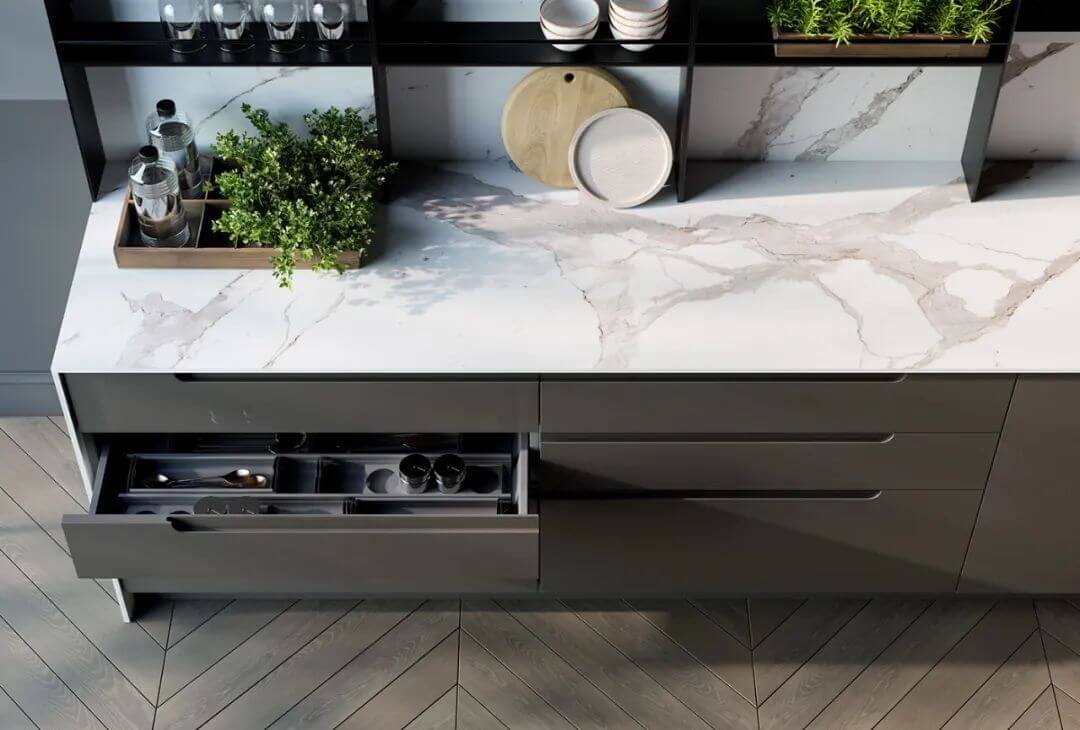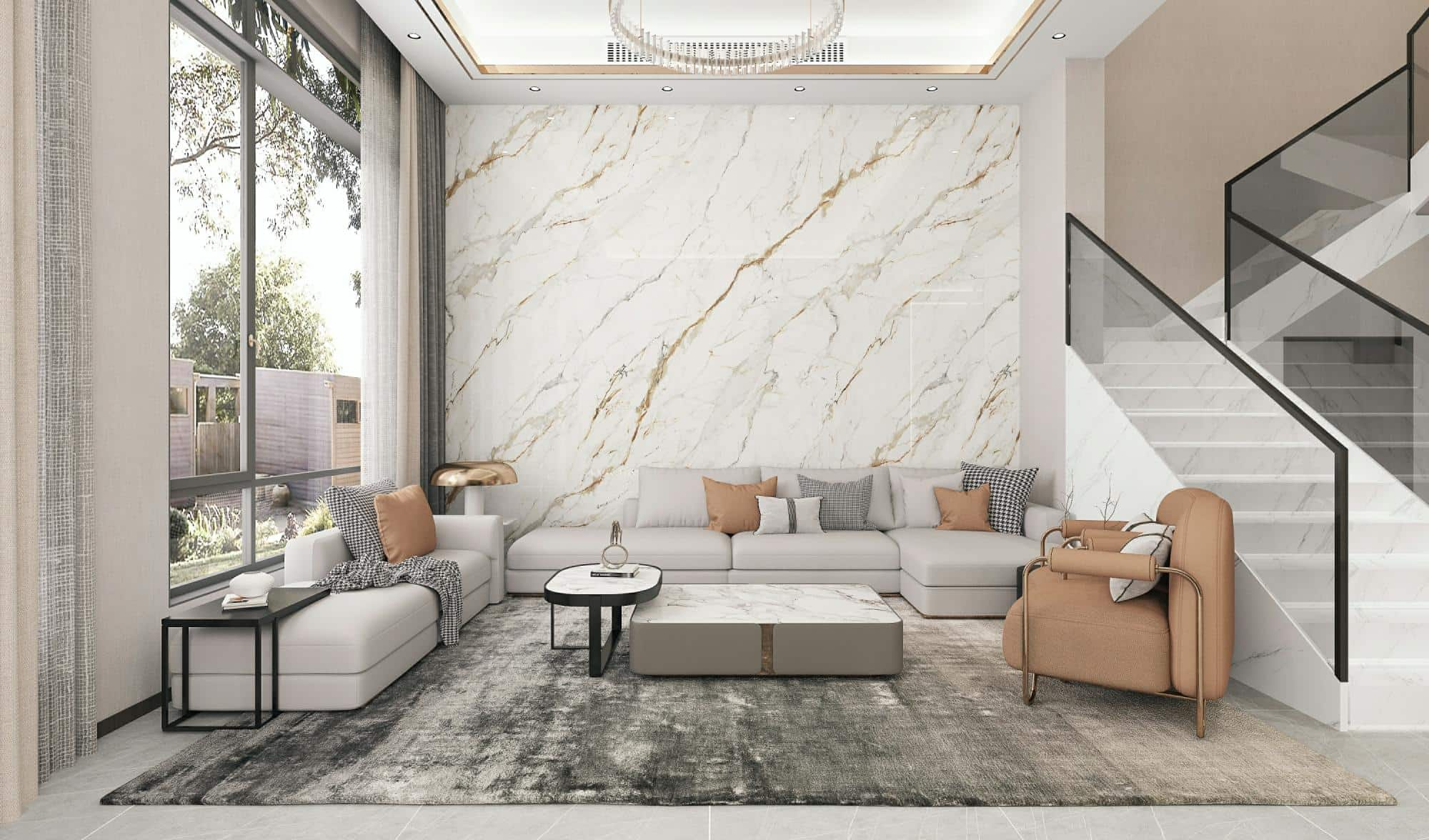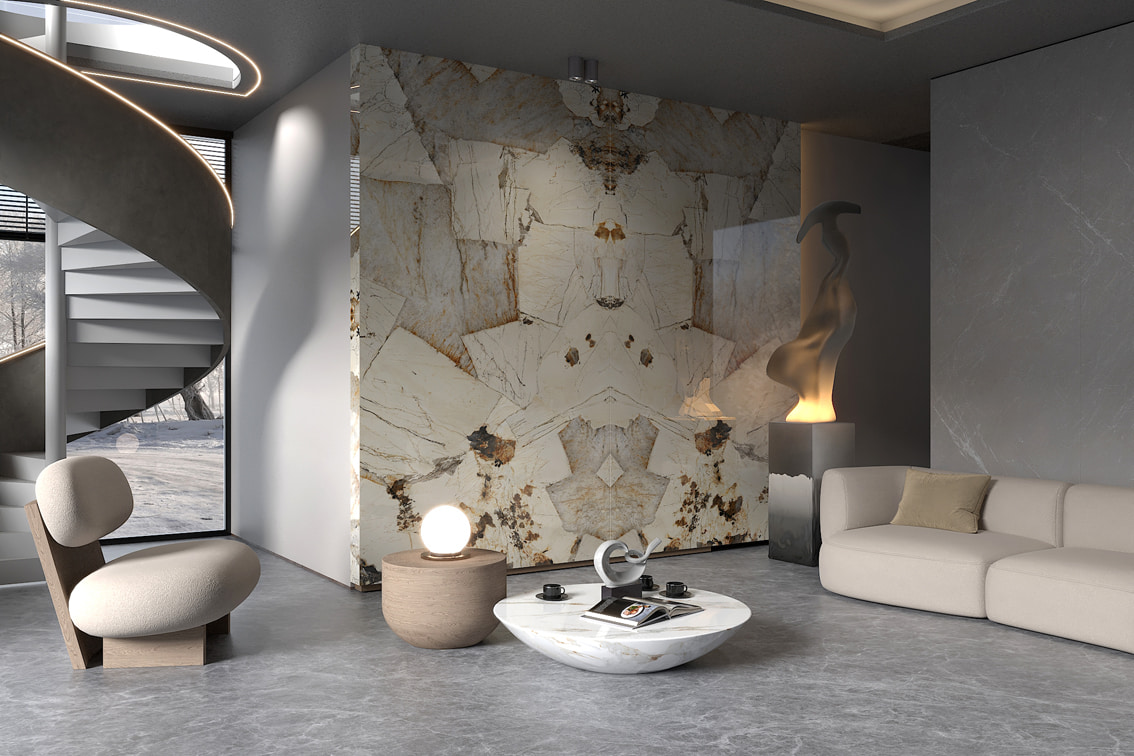Quartz vs. Sintered Stone Which is Better?
/ /Quartz and sintered stone are currently widely used in areas such as cabinets, floors and wall decoration. They have different properties and advantages, and choosing which material is better depends on the specific scenario and personal preferences of the customer. The following is an in-depth analysis of the differences between quartz and sintered stone from the three perspectives of composition and manufacturing process, board strength and aesthetics.
1. Composition and Manufacturing Process
Quartz: Quartz is made of about 90-95% natural quartz crystals mixed with resins, polymers and pigments. The resin binds the quartz particles together to make it a strong and impermeable surface. The manufacturing process makes the quartz surface highly uniform, with a certain aesthetic and practicality.
Sintered Stone: It is a new type of porcelain material made from natural raw materials through a special process, with the help of a 16,000-ton press, combined with advanced production technology, and fired at a high temperature of more than 1200°C. Sintered stone is subjected to high temperatures and pressures during the production process, making it very strong and durable, with a natural stone texture. OEM sintered stone is also available upon request.

2. Plate Strength
Quartz:
Very durable, resistant to scratches, impacts, and stains.
However, quartz is less resistant to high temperatures than sintered stone, and exposure to high temperatures (such as hot pots) may damage the surface.
Sintered Stone:
Extremely durable, with strong resistance to wear, impact, heat, and UV rays.
Ability to withstand high temperatures (up to 1500°F or 800°C), making it an ideal choice for high-temperature environments such as kitchen countertops. Some OEM sintered stone are inlaid with appliances such as induction cookers.

3. Aesthetics and Design Options
Quartz:
Available in a variety of colors, textures, and finishes.
Usually with a uniform pattern, quartz has a consistent texture and color due to the manufacturing process, making it suitable for those who like a uniform style.
There are styles that imitate natural stone, as well as monochrome or striped designs, which meet a variety of design needs.
Sintered stone:
Provides a wide range of colors, textures and surface treatments, usually imitating natural stone such as marble, granite, etc.
Sintered stone has a very diverse appearance, with natural textures and unique textures, which is particularly suitable for customers who pursue personalized design and are used to design whole house.
Because ultra-thin luxury sintered stone can be produced (as thin as 3cm), it can be composited on door panels such as cabinets and wardrobes, presenting a luxurious design sense.

In general, quartz and sintered stone are both very good materials, and the specific choice depends on your project requirements. If it is used in places where high temperature resistance is required (such as kitchens), sintered stone may be a better choice.